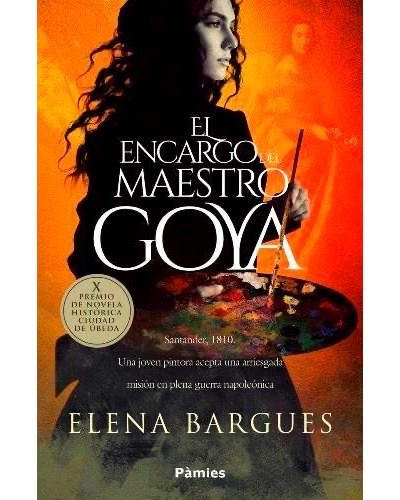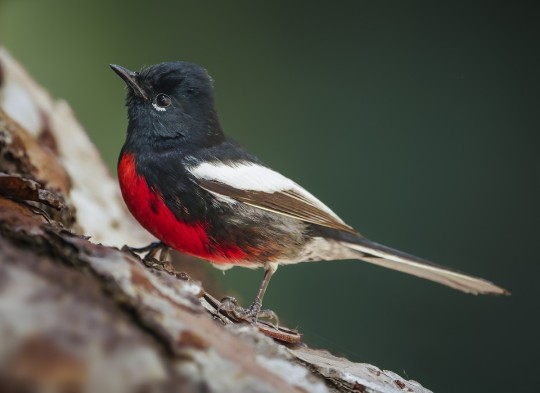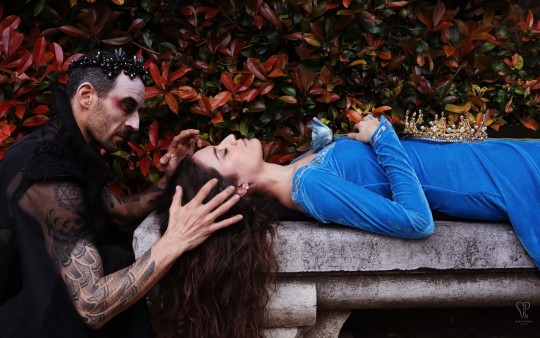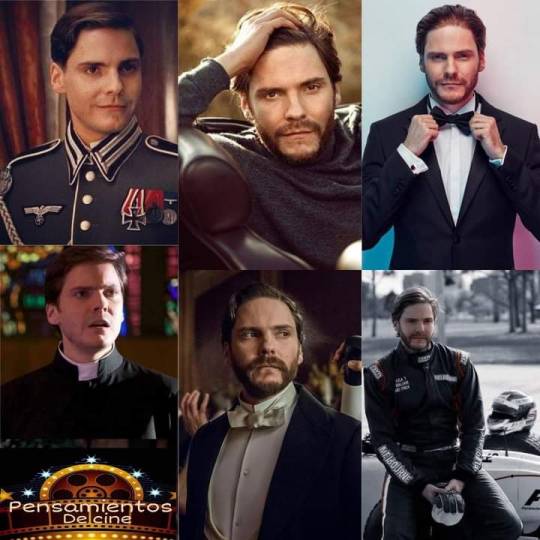#marta salvador
Explore tagged Tumblr posts
Text

Mãe Marta stands above her divination instruments, the buzios or cowrie shells. As she tosses them on her table, the position in which they fall indicates a response from the Orishas, which she interprets for the inquirer.
Yalorixá Mãe Marta de Oyá spends much of her time split between satisfying the demands of restless spirits and troubled souls.
As head priestess of the only Candomblé temple in Santo Antônio do Carmo, the historic center of Salvador da Bahia in northeast Brazil, the 45-year-old has her work cut out for her.
When not preparing feasts and festivals in the Candomblé tradition, she is catering to the needs of adherents to the faith who need a little guidance. She also conducts cleansings for those who believe their home could benefit from a better spiritual balance.
#Yalorixá Mãe Marta de Oyá#head priestess#Candomblé#Temple#Santo Antônio do Carmo#Salvador#Bahia#Brazil#Tradition#Culture#Spirituality#History#Buzios#Cowrie Shells#Orisha
121 notes
·
View notes
Text

17 notes
·
View notes
Text
Human rights defenders on Wednesday condemned a Salvadoran court's decision to uphold what critics say are politically motivated murder and illicit association charges against five environmental activists.
Miguel Ángel Gámez, Alejandro Laínez García, Pedro Antonio Rivas Laínez, Teodoro Antonio Pacheco, and Saúl Agustín Rivas Ortega were arrested in January 2023 and accused of murdering María Inés Alvarenga—an alleged collaborator with the U.S.-backed Salvadoran regime that killed approximately 75,000 civilians during a 1979-92 civil war—when the men were Farabundo Martí National Liberation Front (FMLN) rebels.
Defenders of the "Santa Marta Five" have highlighted not only the Salvadoran government's failure to show any proof of the men's guilt, but also the fact that perpetrators of civil war-related crimes are protected under a 1992 amnesty agreement between the government and FMLN.
"It is outrageous that the judge is allowing this trial to go forward despite the lack of any evidence of a crime," said John Cavanagh, a senior adviser at the Washington, D.C.-based Institute for Policy Studies.
"The international community stands strong with the five leaders of the successful fight against mining, and we will join Salvadoran water defenders to continue to fight with them for justice in this case," he added.
Advocates for the five defendants have also noted how a "state of exception" imposed as part of right-wing Salvadoran President Nayib Bukele's war on drug gangs has eroded due process and other rights. As Common Dreams has reported, tens of thousands of people have been arbitrarily arrested and imprisoned under the crackdown. More than 130 of them have died in state custody.
Some critics say it's no coincidence that the Santa Marta Five—who played a key role in winning a 2017 ban on metals mining in El Salvador—have been targeted by Bukele's government, which is taking steps to reverse the historic prohibition. Environmental activists have found themselves in the crosshairs.
Vidalina Morales, who heads the environmental and human rights group Association of Economic and Social Development (ADES)—where Santa Marta Five member Pacheco worked— toldAtmos earlier this year that by arresting the Santa Marta Five, Bukele's administration is "sending us a message."
"They want to open the path for these mining projects to come back," she explained. "They want to criminalize the social movements in this country
#ecology#enviromentalism#san salvador#el salvador#human rights#mining industry#environmental justice#environmental activism#santa marta#Santa Marta five#political prisoners
6 notes
·
View notes
Text

Santa Marta, Cabañas
10-10-14
#photographers on tumblr#original photographers#santa marta cabañas#cabañas el salvador#fotos de el salvador#amusement park#el salvador
4 notes
·
View notes
Photo

PRIMA PAGINA El Pais di Oggi domenica, 28 luglio 2024
#PrimaPagina#elpais quotidiano#giornale#primepagine#frontpage#nazionali#internazionali#news#inedicola#oggi periodico#domingo#coste#turismo#para#parte#madrid#negando#limite#salvador#general#marta#presidente#avance#cambio#discute#medio#entre#pero#olimpica#victoria
0 notes
Text
Marta Rodríguez: Una muestra fotográfica en los jardines de Portlligat repasa la vida de Dalí y Gala en la que fue su casa durante medio siglo

View On WordPress
0 notes
Text

(X)
0 notes
Text
The Catalan authors who were kept out of the Nobel Literature Prize for being Catalan
Did you know that there have been a handful of Catalan writers who were candidates to win the Nobel Literature Prize, but because of Spanish interference they never did?
The Nobel Prize discloses its debate and reasoning process 50 years after each edition. This means that we already know the details of what happened in the earliest editions of this Prize, which was started in 1901.
The name of the Catalan play-writer Àngel Guimerà (author of Marta of the Lowlands, Mar i cel, La filla del mar...), whose works have been translated to many languages and played all around Europe and the Americas, with many film and opera adaptations, sounded often in the Nobel committee. He was presented as a candidate to win the Nobel Prize 17 times in a row, since 1907 until his death in 1924. In the editions of 1917 and 1919, many were convinced he would win. However, the declassified documents show why he didn't: as written by the man who was then president of the Nobel Committee, Haralg Härne, Guimerà wasn't given the prize "to avoid hurting the national pride of the Spanish". In 1919, Härne writes that the objective of the Nobel Prize is to promote peace and thus to award Guimerà and show support for a minority culture would be to encourage internal conflict (🤦). The Academy decided that they couldn't give a prize to Guimerà "before awarding another writer who expresses himself in the most ancient noble language of the country" (weird way to mean "the official language", aka Spanish, because they surely didn't mean Basque). In summary, if a Catalan is to be considered, he must always be second to a Spanish man. Even when the Catalan is, in the words of the Nobel Academy, "the most eminent writer of our times", he can never be considered an equal, always must be behind.
Àngel Guimerà wrote in the Catalan language, which was discriminated against by Spanish and considered an enemy by the Spanish government and much of Spanish society. Guimerà was a firm defender of the right to use the Catalan language and that nobody should be forced to speak the imperial languages instead of their own, and was involved with the political movement for the rights of Catalan people. For this reason, every time the famous Swedish academy was considering Guimerà, the Spanish Royal Academy of Language (RAE) fought it with all its might. Nowadays, Guimerà's theatre plays continue to move thousands of spectators every year.
The same happened again with the poet Josep Carner. In the 1960s, Josep Carner was on exile, because he was a Catalan poet writing in Catalan and who stood against the fascist dictatorship of Spain, which persecuted the Catalan language and identity. Famous writers from around the world, including T. S. Eliot, François Mauriac, Giuseppe Ungaretti and Roger Caillois, supported Josep Carner's candidacy to win the Nobel, but the Spanish Government did everything possible to obstruct it. We don't know if Carner would have won or not, but he was deprived of even trying because of the Spanish government's hatred of Catalan.
Something similar seems to have happened between the 1970s and 1990s to three other Catalan poets: Salvador Espriu, J. V. Foix, and Miquel Martí i Pol, where they did not get any support from the Spanish authorities, so we don't know how it would have ended up.
Another example of what it means to have a state actively working against you because of bigotry against your cultural group.
Sources: book Det litterära Nobelpriset by the president of the Nobel Committee Kjell Espmarck, Pep Antoni Roig (El Nacional), Joan Lluís-Lluís (El Punt Avui), and Jordi Marrugat (Institut Ramon Llull).
#literatura#arts#història#àngel guimerà#josep carner#literature#books#reading#nobel prize#nobel literature prize#catalanophobia#catalanofòbia#catalan#cultures#writing#human rights#minority languages#1900s#history
77 notes
·
View notes
Note
What do you think about the controversies surrounding how Michael filmed a clip in a favela? Not paying people or asking their permission to have them in the video and ignoring how many didn't want him there at all? Making a deal with freaking drug lords to let him film there?
Okay, let's get one very important thing out of the way: the folks that were unhappy with Michael filming "They Don't Care About Us" in a favela were NOT the people who actually lived there, but the goverment of Rio - aka the people who are to blame for the favelas and their terrible living conditions existing.
They were worried that this was gonna expose their complete failure to do their job, and reinforce Brazil's/Rio's image as a very dangerous place, and would ruin their attempts of hosting the Olympics here - oh, when we did host the World Cup and The Olympics, years later, plenty of people here were mad because it meant even less money was gonna be put on basic stuff the population needs to live. There protests everywhere in the country for months.
Compare that to people being absolutely excited for Michael's arrival that they follow him and his car around everywhere, standing outside his hotel for hours in the hopes to see him. To the people in the Santa Marta favela watching him dance for hours, cheering him on from their balconies, waving at him and at the cameras, dancing along to the beat, putting banners and posters of "King of Pop" everywhere, and making a life-size statue of him that is still there.
Can you REALLY tell me they didn't like having him there? That they didn't want to be in the video? That this was not one of the coolest things ever?
And he did give people money, not for the right to use their image, but to help out (hence the statue) - something the government itself doesn't do, which is the whole point of the song. And it wasn't just charity, he even randomly gave a kid ten dollars on the spot just to be nice.
And that's just the stuff in Rio. He went to the city of Salvador too, in the majority black state of Bahia - he ate the food, stayed in an actual house there instead of in a hotel, was constantly waving at the fans and even invited a fangirl over to his room, and, more importantly, did research on Olodum (the guys with the drums that you see in the video) MONTHS in advance and was having a fucking blast with them, and chose them in particular because of the influence of african rhythms in their beats.
The overwhelming sentiment of the people here in Brazil - especially those that were in the video and were interviewed many times through the years - is that Michael was extremely respectul and downright awesome. How about we don't speak over them and act like they're too stupi-I mean, naive to understand they were "exploited" just because they have no money and are mostly people of color?
As for him asking permission to the drug dealers to film in their territory: there are favelas in Rio in which people have to use specific signals/codes to the be allowed back in if they leave even for a little while, to prove they live there, otherwise they're shot on sight.
If Michael went up there without permission from the dealers, he would at best have to deal with being followed and lowkey threatened by the drug lords that are not sure what he wants there. At worst, he'd get someone killed, because while the dealers likely knew him, they don't know the crew and could immediately shoot because they think it's a rival gang or undercover cop.
That's not the same as him just casually being buddies with criminals, that's just not being too stupid to live.
15 notes
·
View notes
Text
MALMAISON MEDIA SALON SOIRÉE 18: EL ENCARGO DEL MAESTRO GOYA (2021)

1. The Introduction
Hello, my dear Neighbors! I’m finally back with a freshly made review in tow!
So, this particular book (available on Amazon and ebook websites but only in Spanish) first came to my attention me due to my interest in Napoleonic era and, as of recently, Francisco Goya’s works. Naturally, this book caught my attention right off the bat because it’s a fucking jackpot!
Okay, Goya is actually a fairly minor character but he has an extremely important role in the story. More on that later!
(Also, tomorrow I will reblog this review to add my song because I’m having headaches today… Those bitches are bothering me again)
Anyway, I loved this book even more than I expected I would, so let’s analyze it to the best of my ability! This review is dedicated to @that-enragee . Enjoy!
2. The Summary
This novel tells a story of three siblings - Mercedes, Salvador and Marta. They are on the way to the city of Santander in order to receive their late aunt’s inheritance. However, another reason for the journey is a task given to Marta by her mentor, Goya. She must make a copy of a painting so that the French don’t loot the real thing.
3. The Story
Surprisingly, I enjoyed the romantic subplots! And that’s really rare for me. But here the subplots are written MASTERFULLY and progress naturally. Yes, there’s more than one romantic subplot. In fact, there’s two (both Mercedes and Marta find love).
I also appreciate the lack of a villain in the story. The take on events is very nuanced and awful people are shown to exist on all sides, so the take is more or less objective, not unlike Goya’s etchings with the theme of war. This nuance makes the story that much more enjoyable.
The pacing is also very good, but sometimes there are annoying flashbacks. Luckily, those are not extensive.
On a slightly darker note, props to the author for killing off some of the characters and making it stick. I know it’s a war story, but some writers don’t have the balls to include this degree of realism.
4. The Characters
Since the narrative takes place away from the frontlines, we don’t really have historical figures as major characters. Even Goya is a minor character in the book and he only appears properly in the end.
I actually liked his portrayal because he truly doesn’t want the French to loot precious artworks but also has an agenda. See, the painting Marta is to forge is a depiction of Santa Casilda by Zurbarán (a painting that actually WAS stolen during the war historically).
This is important because, according to rumors, praying to this particular depiction can cure ailments, including permanent deafness. Since Goya went deaf due to an illness at around 45 years of age, he believes that this painting is his last hope to get his hearing back.
Although I am aware of the ableist implications of the trope of a disabled person seeking a “cure”, it’s important to note that the world back then wasn’t accommodating to the disabled at all and views ranged from them being innocent at best to burdens at worst. Besides, Goya historically would always portray the disabled as helpless in his art, so it’s safe to assume that he internalized the views of the time period.
(Spoiler alert: No worries, dear disabled readers, the author doesn’t pull a magical cure out of her ass and disabled characters stay disabled.)
Goya is also supportive and proud of his pupil, Marta, which is the sweetest thing ever, so we get to see that he truly cares about her.
Speaking of disability, we also have another deaf character, Marta. As one of the main characters, she is naturally explored in more depth than Goya and we get to see her realistic struggle with her own deafness. Unlike Goya, she was born deaf and therefore doesn’t speak, instead communicating with some signs and writing.
She starts out seeking this alleged cure too, but mostly because she is done with being coddled and treated like a child by her siblings, especially Mercedes. She is naïve and somewhat innocent due to being very young (19ish), but she is also kind, brave, compassionate and a bit mischievous, using her painting skills to help pull a prank at one point.
She also embraces her deafness as the story progresses, finds a man who loves her the way she is and learns to respect her as her own person and not the innocent deaf girl she’s assumed to be. There’s a lot of depth and nuance to her character, and I truly appreciate it.
Mercedes, the other protagonist and the oldest sibling in her family is motherly and protective to the point of coddling Marta and being understandably angry that Goya got her involved in a dangerous mission for the sake of some fake “cure”. Mercedes is also a widow and and more cynical than her siblings, but mellows out over the course of her story.
As an older sister myself, I can definitely relate to her wanting to protect her siblings so I enjoyed her character too. I also think that making her a widow instead of an ingenue is a somewhat bold choice for a romantic subplot, but it definitely suits her and gives additional context to her character.
Claude Cornulier, a soldier sent to Santander to try and curb the atrocities, is sweet and a philosopher. He also understands that war is hell and expresses true empathy towards Spanish people. He also falls for Mercedes but never forces her into a relationship. Instead, he is a true gentleman and treats her with the utmost respect so their romance is healthy and entirely consensual.
Then there is Lieutenant Alfonso Bustamante, a fairly young but retired soldier from the Spanish Navy who feels insecure about having scars and only one eye. His health is in the shit as well, but we later learn that he helps local guerillas and has a ring of informants in the area, so he too fights for his country in whatever way he can.
Bustamante is also a gentleman and forms a friendship with Mercedes while also, eventually, falling for Marta. Although he does make the mistake of coddling her somewhat, he eventually realizes that it’s not the best approach and cuts it out, leading to a healthy relationship.
Salvador is a passionate young man who is also fiercely protective of his sisters, as the only living family member.
At one point the painter David is namedropped in the book and the French troops also joke about Soult looting too many paintings, but those two don’t appear in person.
5. The Setting
The descriptions are wonderful and not too long, thank goodness. I really liked them and they helped me become immersed into the story.
6. The Writing
Reading in Spanish was a challenge at times, but I like the style. It has a nice flow, doesn’t feel inappropriately modern and is fairly easy to read for those fluent in Spanish.
7. The Conclusion
Overall, an excellent book that really captured my imagination and attention! If you are fluent in Spanish, I can’t recommend it enough.
Either way, this concludes the 18th soirée at the Malmaison Media Salon.
Stay tuned for future reviews and tomorrow’s reblog with the song, everyone!
Love,
- Citizen Green Pixel
#jacques louis david#napoleon bonaparte#francisco goya#napoleonic era#napoleonic media#el encargo del maestro goya#guerras napoleónicas#Guerra peninsular#novelas históricas#malmaison media salon
33 notes
·
View notes
Text
Warbler Showdown; Bracket 6, Poll 3


Yellow-crowned Whitestart (Myioborus flavivertex)
IUCN Rating: Least Concern
Range: the Santa Marta mountains of northern Colombia
Habitat: humid montane forest and cloudforest, as well as their edges; elevation 1200-3050m, though generally above 2000m
Subspecies: none
Painted Redstart (Myioborus pictus)
IUCN Rating: Least Concern
Range: mountainous regions of the southwestern US and Mexico, as well as Guatemala, El Salvador, Honduras, and Nicaragua
Habitat: pine-oak woodlands, though in the north they prefer canyon valleys and in the south they can be found in more arid areas
Subspecies: 2
Image Sources: yellow crowned (Jose Illanes); painted (Anon)
#PARE back for round 2 on this blog lol#NWW Showdown#yellow crowned whitestart#yellow crowned redstart#painted redstart#painted whitestart#myioborus#parulidae#passeriformes#bird poll#polls
9 notes
·
View notes
Text

Chile Hoy Magazine Cover. Last issue in circulation, published 4 days after the coup d'état. Year II, No. 65. Week of September 7 to 13, 1973.
Headline: Torture in Cautin. The cover featured the bruised face of an activist woman.
Hoy was edited by the Marxist philosopher Marta Harnecker

14 notes
·
View notes
Text
Jesucristo: Nuestra Roca

Todo lo que necesitamos se encuentra en Cristo, quien derrama misericordia y compasión sin restricciones.
Malaquías 3.6
Ayer vimos que Cristo es el fundamento de nuestra fe, y esa es una verdad reconfortante. Exploremos las acciones del Señor para conocer mejor su naturaleza. El Señor Jesús...
Perdonó a los pecadores. El Señor mostró misericordia a quienes reconocieron sus pecados. Por ejemplo, tuvo compasión de la mujer sorprendida en adulterio y, en vez de condenarla, le perdonó sus pecados (Jn 8.1-11).
Consoló a los que sufrían. Visitó a María y Marta, que lloraban la pérdida de su hermano (Jn 11.1-45).
Proveyó para las necesidades. Después de pasar tres días sanando, se preocupó de que la gran multitud no hubiera comido, y les dio más que suficiente para saciar su hambre (Mt 15.30-37).
Intercedió por sus discípulos. Antes de ser crucificado, Cristo le pidió al Padre que protegiera y santificara a sus seguidores, lo que incluye a los creyentes de hoy (Jn 17.15-20).
Fortaleció a los creyentes. En Hechos 1.8, el Señor envió a sus discípulos a compartir el evangelio, asegurándoles: “Recibiréis poder, cuando haya venido sobre vosotros el Espíritu Santo”.
El Señor Jesús sigue perdonando, consolando, proveyendo, intercediendo y dando poder hoy. Alabemos al Padre celestial por el refugio que nos ha dado en nuestro Salvador.
(Ps. Charles Stanley).
2 notes
·
View notes
Text
Nine organizations from around the world on Monday renewed calls for El Salvador's government to drop "politically motivated charges" against the "Santa Marta Five" as the well-known water defenders prepared to stand trial beginning April 3.
Miguel Ángel Gámez, Alejandro Laínez García, Pedro Antonio Rivas Laínez, Teodoro Antonio Pacheco, and Saúl Agustín Rivas Ortega were arrested in January 2023 and accused of murdering an alleged military informant during a civil war over three decades ago. Rights groups worldwide have repeatedly highlighted that not only has the Salvadoran government failed to produce any proof of their guilt, but also the five men should be covered under a 1992 amnesty law related to the war.
"In the spirit of Saint Óscar Romero, these community leaders have embodied the legacy of the preferential option for the poor in their fight for justice and for the well-being of their communities," Institute for Policy Studies (IPS) senior adviser John Cavanagh said Monday, a day after the 44th anniversary of Romero's assassination in San Salvador.
"Now, we're calling for justice for the Santa Marta Five as they face politically motivated charges and attempts to silence their movement," added Cavanagh, whose group gave its 2009 Letelier-Moffitt Human Rights Award to the National Roundtable on Metals Mining, a coalition the arrested water defenders helped build.
1 note
·
View note
Text

"You poor simple fools, thinking you could defeat me. Me? The mistress of all evil? Well here's your precious Princess!" Maleficent, The Sleeping Beauty (Disney)
My last collection of fantasy crowns and garments is now launched -I'm so proud of this whole project!
Crowns, corsets, jackets, accessories... everything a villain queen would want! All these pieces are now available in my Etsy shop.
I love creating lore around my launches. You can learn everything about why I just released the spooky Maleficarum collection in my most recent YouTube video.
🧛🏻♂️ Jaime G. Miguélez
👸🏻 Marta Pardo
📷 Luis Melero
📍Catedral de San Salvador, Oviedo (Spain)
#sleeping beauty#once upon a dream#maleficent#princess aurora#fairytale#costume design#corset maker#high fantasy#fantasy crowns#fantasy wedding#heroes and villains#disney villain#evil queen
3 notes
·
View notes
Text

#DanielBrühl💗💖Es conocido por películas como Good Bye, Lenin! 2003 , Los edukadores 2004 , Joyeux Noël 2005 , Inglourious Basterds 2009 , EVA 2011 , Rush 2013 , Colonia 2015 , la serie The Alienist 2018 y en el Universo cinematográfico de Marvel como Helmut Zemo en la película Capitán América: Civil War 2016 y en la miniserie The Falcon and The Winter Soldier 2021.Hijo de la profesora Marisa González Domingo y el director de teatro y televisión alemán Hanno Brühl se conocieron en su estancia en España y se mudaron a Alemania , donde tuvieron a su primer hijo. El 16 de junio de 1978 nació Daniel Brühl, en el barrio de Gracia de Barcelona.Aunque nació en Barcelona , tiene también la nacionalidad alemana , ya que su padre es de origen alemán y en su niñez se trasladó a Alemania , donde creció en la ciudad de Colonia , aunque todos los veranos volvieron a España. Muchos de esos veranos Daniel los pasó en Pratdip , en Tarragona. Desde pequeño es hincha del equipo español F. C. Barcelona y también es aficionado del equipo alemán F. C. Colonia.
De mayor , Daniel se enfrentó a su padre al comunicarle que quería ser actor , profesión que compaginaba con la de cantante de la banda Purge. De esta manera a finales de los años noventa participó en diversos títulos que le abrieron paso en el cine alemán.En 2001 inició el rodaje de Nichts bereuen , cuyo director sugirió el nombre de Jessica Schwarz para el principal papel femenino. Daniel se enfadó con la decisión porque la actriz era conocida por haber sido previamente la presentadora de un programa de televisión. Cuando la vio trabajar , se enamoró de ella y se convirtieron en novios. Rompieron su relación en 2010.
En 2002 incrementó su popularidad al protagonizar Vaya con Dios. Al año siguiente esa fama se incrementó al encabezar la plantilla de actores de la película Good Bye, Lenin! (Wolfgang Becker), una comedia en la que un joven (Alex) oculta a su madre recién despertada de un coma que el Muro de Berlín ha caído y con él todas las ideas en las que ella creía.Daniel ganó el premio al mejor actor de la Academia de Cine de Alemania. Meses más tarde cosechó el premio de la Academia de Cine Europeo, así como el galardón del público. Tras la ceremonia declaró su interés por trabajar con Julio Médem y Fernando León de Aranoa. Meses después acudió a la entrega de los Premios Sant Jordi. Por estas razones Daniel pasó a formar parte de la promoción Shooting Star de 2002, cuyo objetivo es promocionar a nuevos actores europeos.
En 2004 Daniel siguió apuntándose a películas de corte social como Los edukadores, en la que dio vida a un joven rebelde, que de forma coordinada junto con un compañero de piso penetraba en las casas de los ricos para desordenar sus valiosas pertenencias, dejándoles una nota con un mensaje social. La película que lo catapultó a la fama mundial fue 'Goodbye Lenin' en 2003, donde cautivó a todo la crítica y a todo el público europeo y mundial y ganó su primer premio, Premio del Cine Europeo. En 2006 participó en su primera película española, encarnando al anarquista Salvador Puig Antich en 'Salvador', papel que le otorgó varios premios y una nominación a 'Mejor Actor' en los Goya. Además, la película fue nominada en el Festival de Cannes a mejor película.
En 2006 tuvo un papel en la película de espías 'El ultimátum de Bourne' y en 2009, protagonizó 'Malditos Bastardos', estrenada en el festival de Cannes y dirigida por Quentin Tarantino , con la que logró numerosas nominaciones a diferentes premios y ganó 6 premios. Además , todo el elenco ganó el Screen Actors Guild Award a 'Mejor actuación'. En 2012 volvió a España para rodar 'Eva', junto a Marta Etura y Alberto Ammann, película en la que volvió a estar nominado a 'Mejor actor' en los Goya. En 2013 se metió en el papel del piloto de Fórmula 1 Niki Lauda en la película 'Rush', que , junto a Chris Hemsworth , consiguió 17 nominaciones a diferentes premios por su excelente interpretación y que ganó 2. En 2015 trabajó en 'La dama de oro' y en 2016 , participó en la película 'Capitán América: Civil War', introduciéndose en el universo de los cómics Marvel.
En 2017 protagonizó 'La casa de la esperanza' . También protagonizó la serie de televisión 'The Alienist'. Además, rodó 2 películas, 'the cloverfield parados' y '7 días en entebbe'.
7 notes
·
View notes